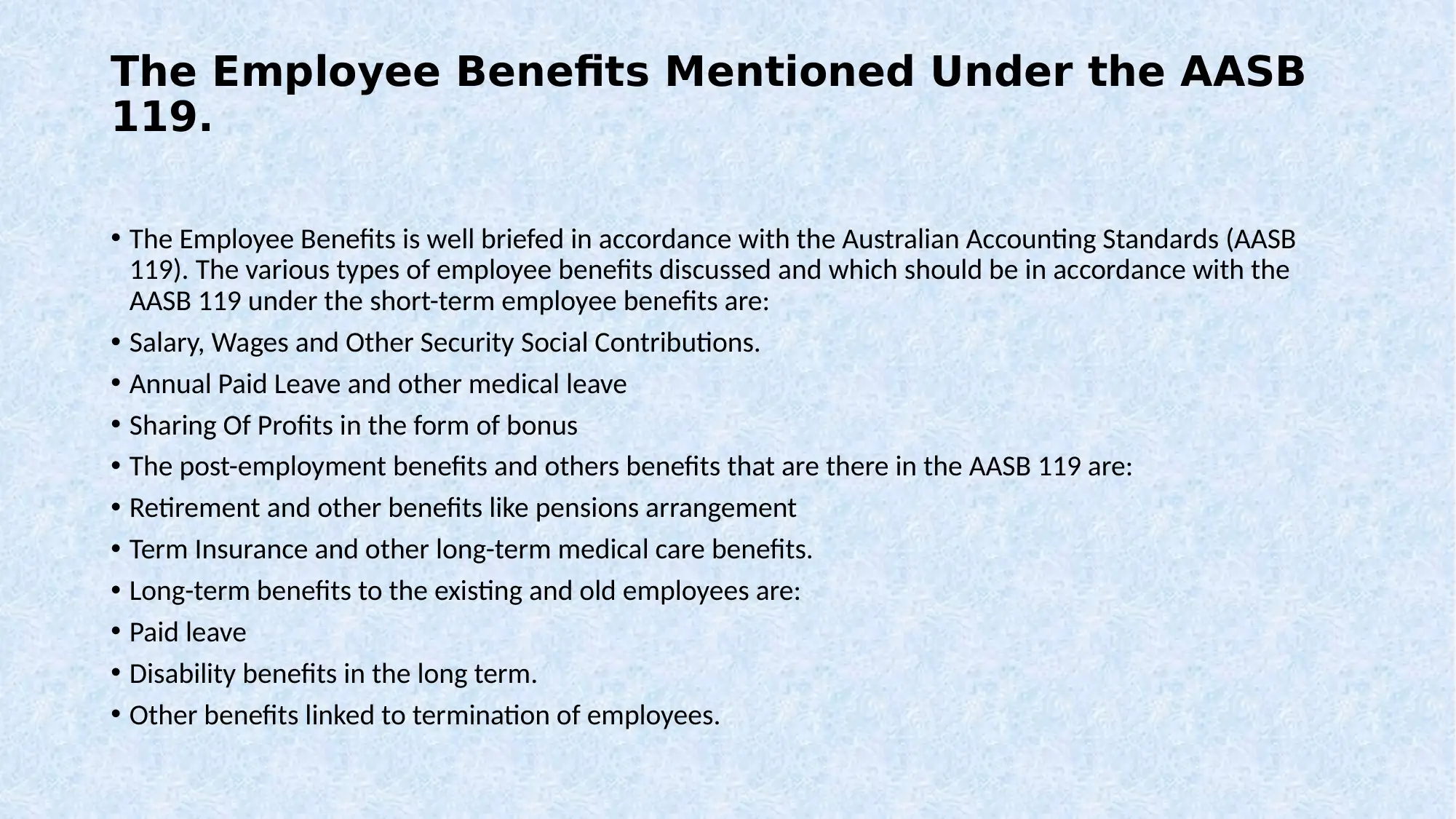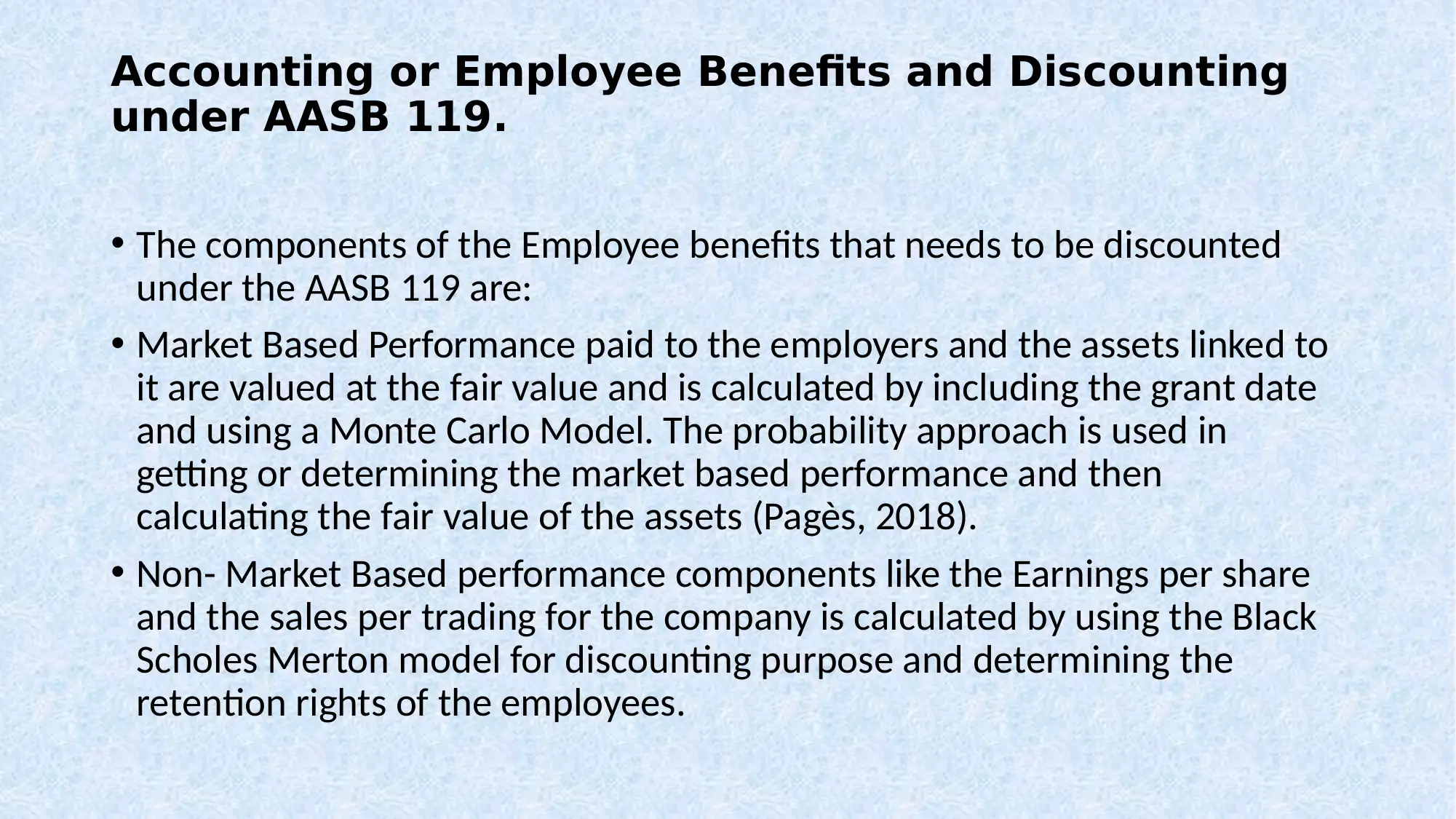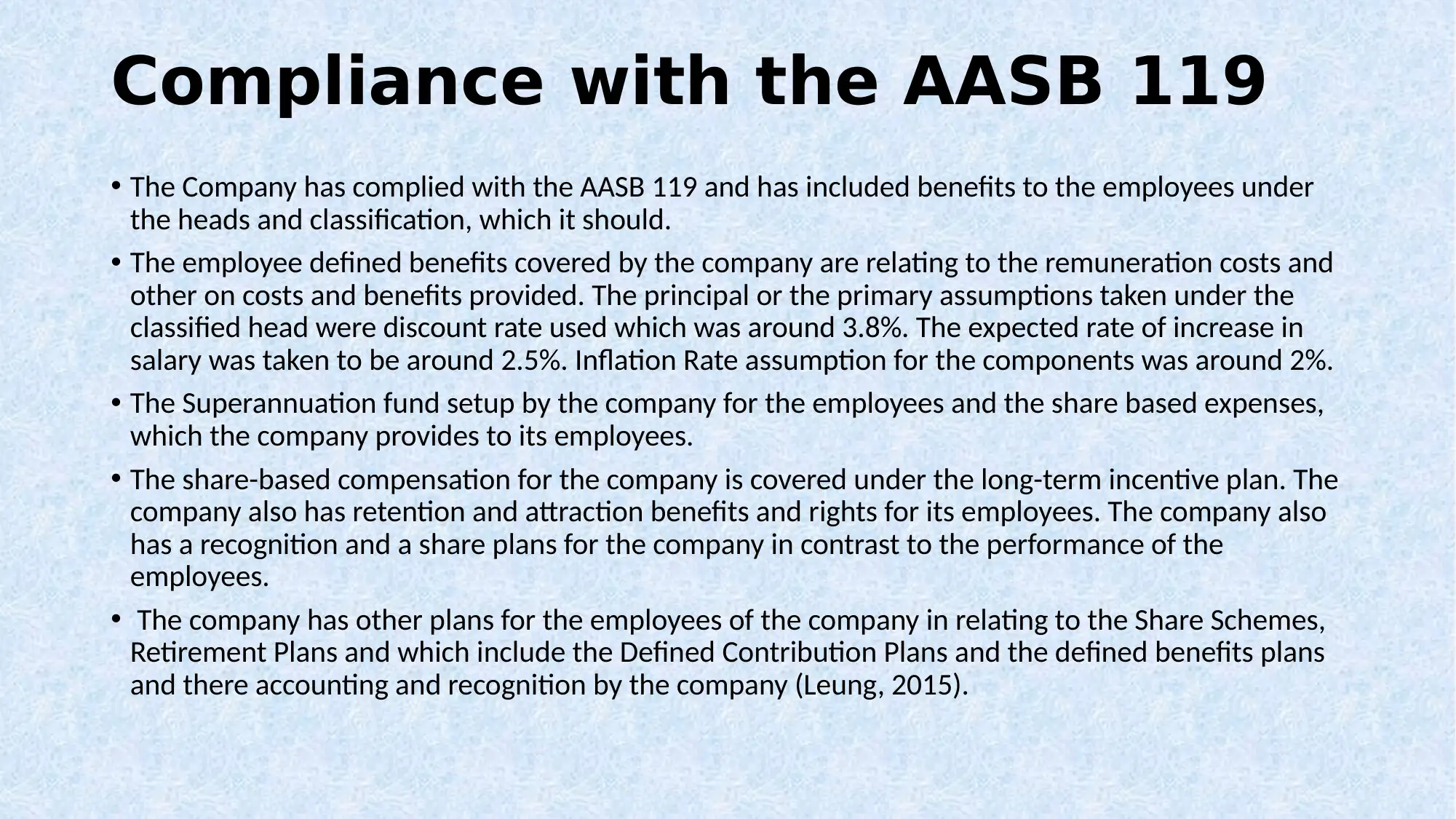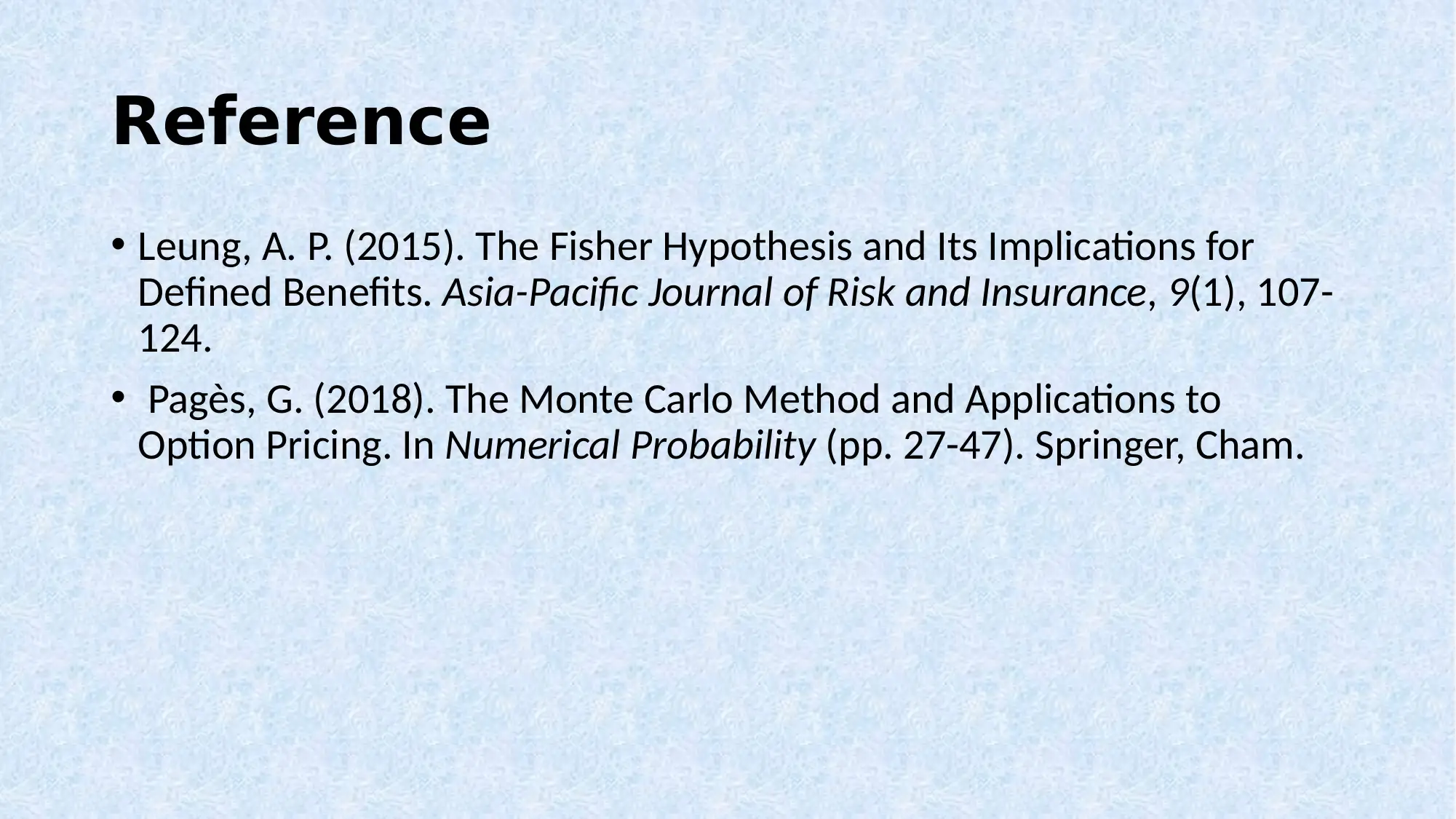Woolworths Group: AASB 119 Employee Benefits Analysis and Presentation
VerifiedAdded on 2023/06/04
|6
|566
|215
Presentation
AI Summary
This presentation analyzes Woolworths Group's employee benefits as reported in their 2018 annual report, focusing on compliance with Australian Accounting Standard AASB 119. The presentation identifies various employee benefits, including short-term benefits like salary, wages, paid leave, and profit sharing, as well as post-employment and long-term benefits such as retirement plans, insurance, and disability benefits. It details which employee benefits require discounting under AASB 119, specifically mentioning market-based and non-market-based performance components. The presentation then assesses Woolworths Group's compliance with AASB 119, highlighting the key assumptions used, such as discount rates, salary increase expectations, and inflation rates. Furthermore, it covers the company's superannuation funds, share-based compensation plans, and other employee schemes, emphasizing their accounting treatment and recognition. The analysis is supported by data from the annual report and relevant academic references.
1 out of 6













![[object Object]](/_next/static/media/star-bottom.7253800d.svg)